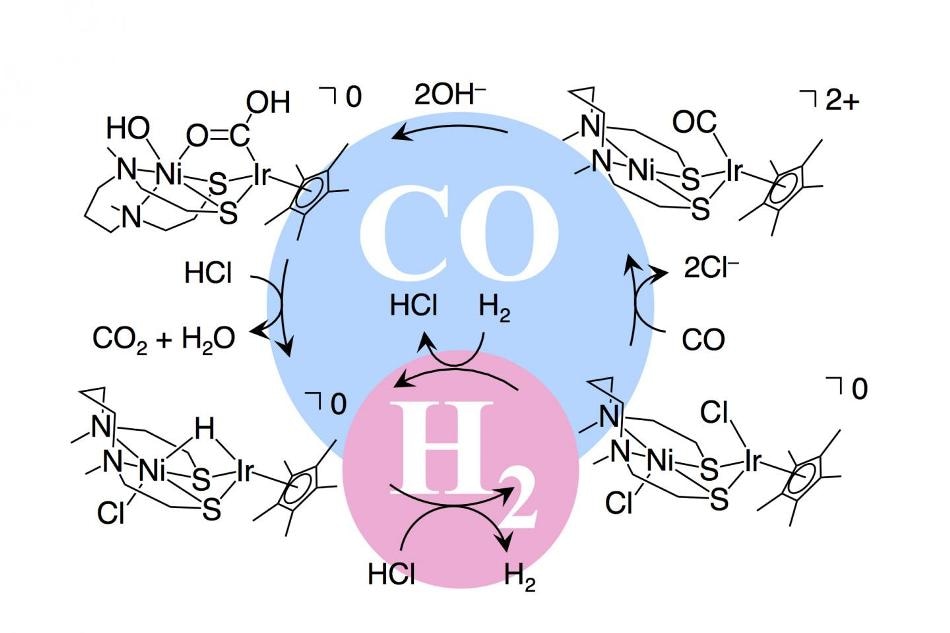Jun 23 2017
A catalyst capable of oxidizing both carbon monoxide and hydrogen to generate energy has been developed as an outcome of a Japanese collaboration.
 Reaction mechanism with a catalyst for fuel cells that use hydrogen and carbon monoxide as fuels. CREDIT: Kyushu University
Reaction mechanism with a catalyst for fuel cells that use hydrogen and carbon monoxide as fuels. CREDIT: Kyushu University
There is a growing need for eco-friendly fuel sources, with the goal of weaning off the reliance on fossil fuels becoming commonly recognized. A possible sustainable fuel source is represented by hydrogen when it is developed from water and burned with oxygen since only water is released as a by-product. Extensive research is being conducted on the oxidation of hydrogen to release water and energy using fuel cells containing catalysts. However, catalysts employed in hydrogen oxidation usually suffer from poisoning by carbon monoxide, which is available as a contaminant in commercial hydrogen gas. Thus, the potential to oxidize both carbon monoxide and hydrogen in the same reaction system is considered to be an attractive prospect for preventing catalyst poisoning and increasing the effectiveness of producing energy from hydrogen.
A collaboration headed by Kyushu University recently produced a catalyst capable of oxidizing both carbon monoxide and hydrogen based on the pH of the reaction system. The catalyst imitates the behavior of two enzymes: carbon monoxide dehydrogenase in basic media (pH 7-10) and hydrogenase in acidic media (pH 4-7). The catalyst is a water-soluble complex comprising of nickel and iridium metal atoms with a novel "butterfly" structure. The Researchers analyzed the ability of this catalyst to oxidize carbon monoxide, hydrogen, and a 1:1 mixture of these gases. Most importantly, the Researchers succeeded on isolating different intermediates in the oxidation processes in order to verify the mechanisms of carbon monoxide and hydrogen oxidation by the catalyst.
We found that the catalyst reacted with hydrogen to form a hydride complex under acidic conditions. In addition, the catalyst readily coordinated with carbon monoxide, which was oxidized to carbon dioxide, under basic conditions.
Professor Seiji Ogo, Faculty of Engineering/ International Institute for Carbon-Neutral Energy Research, Kyushu University and First Author
The Researchers then examined the resistance of their catalyst to poisoning caused by carbon monoxide in a prototype fuel cell using feed gases of carbon monoxide, hydrogen and a 1:1 mixture of the two. The power density of the fuel cell with the catalyst relied on the system pH and feed gas composition. Oxidation of carbon monoxide was faster at high pH (basic conditions) and oxidation of hydrogen by the catalyst was assisted at low pH (acidic conditions); these trends correlate well with the behavior observed for the related enzymes.
The ability of our catalyst to use both hydrogen and carbon monoxide as energy sources represents an important advance in hydrogen technology.
Professor Seiji Ogo, Faculty of Engineering/ International Institute for Carbon-Neutral Energy Research, Kyushu University and First Author
It is expected that catalysts for hydrogen oxidation that can resist poisoning caused by carbon monoxide will allow for the development of hydrogen fuels cells with enhanced performance, representing another step towards the goal of developing a sustainable society.